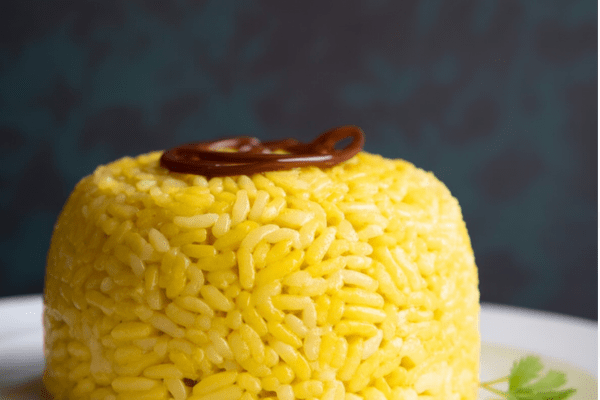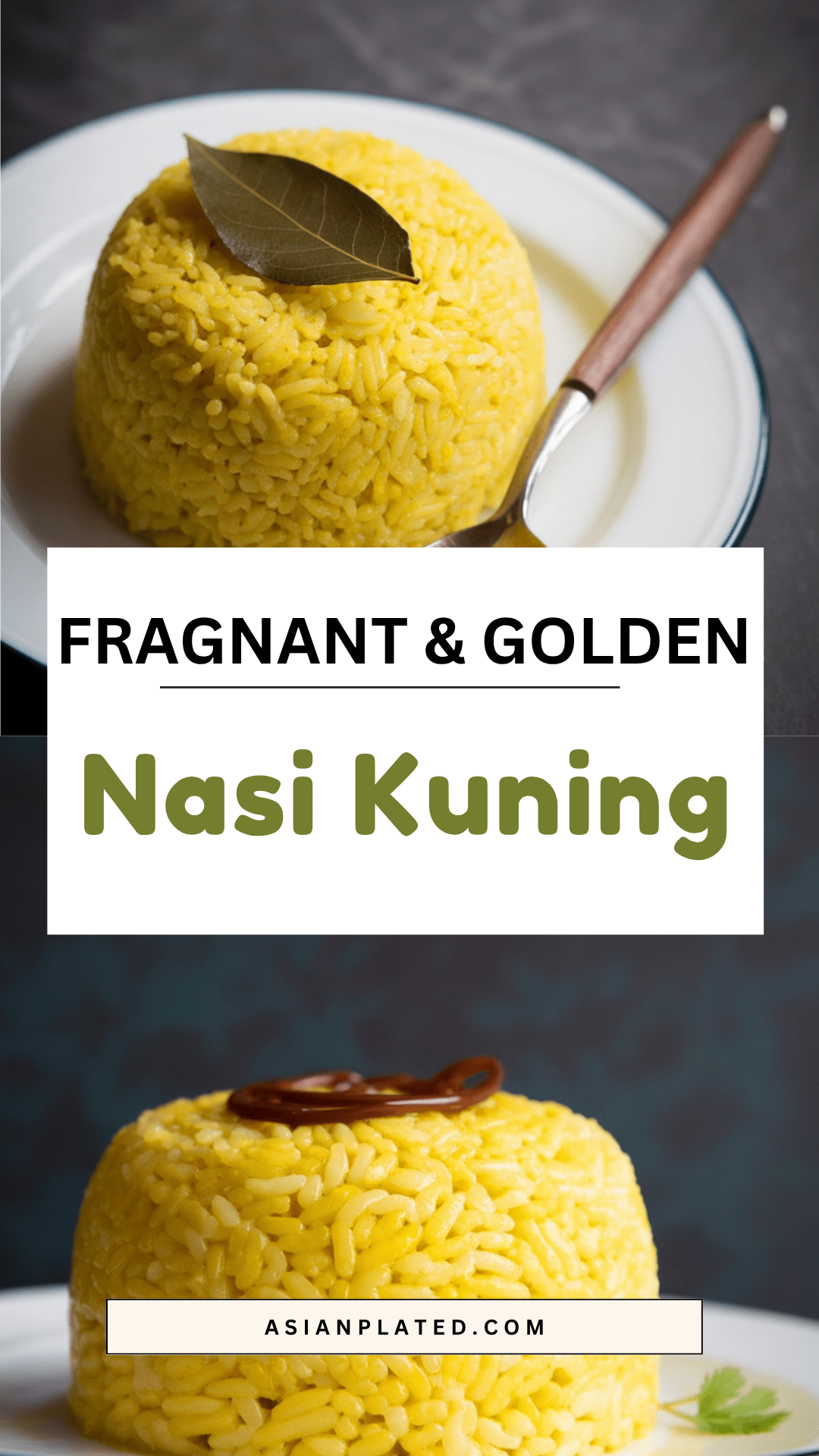Fragrant, golden, and deeply comforting — nasi kuning is Indonesia’s beloved turmeric rice, and honestly, it’s hard not to crave it even on a regular weekday. Traditionally served at celebrations like birthdays or weddings, this rice doesn’t need a special occasion. Just waking up and feeling good is reason enough, right?

The bold yellow hue comes from turmeric, while coconut milk and aromatics like lemongrass and kaffir lime leaves make the rice irresistibly rich and fragrant. Whether you’re using a stovetop, rice cooker, or pressure cooker, this recipe is super flexible and doesn’t ask for much — just a little care and the right ingredients.
Cooking Methods for Nasi Kuning
Wash the Rice Thoroughly First
Start by rinsing your rice under cold water several times until the water runs clear. This is key to removing the excess starch — otherwise, your rice might turn gummy or clump together. After rinsing, drain it well using a sieve.
Stove-Top Method
- In a saucepan, bring water and coconut milk to a gentle boil.
- Add the rinsed rice, turmeric, lemongrass, bay leaf, kaffir lime leaf, salt, and a pinch of sugar.
- Stir everything together and lower the heat to a simmer.
- Cover with a lid and cook for 20 minutes. Then turn off the heat, but don’t open the lid yet.
- Let it rest for 10 minutes before uncovering and fluffing the rice with a fork.
Rice Cooker Method
- Add all your ingredients — rice, coconut milk, water, turmeric, herbs, spices, salt — to the inner pot.
- Stir everything well.
- Set your rice cooker to the standard white rice setting.
- After the cooking cycle finishes, let it sit for 10 minutes, then fluff the rice.

What to Serve with Nasi Kuning
This turmeric rice is bursting with flavor on its own, but it really shines when paired with bold, spicy sides. Think:
- Spicy beef rendang
- Green jackfruit curry
- Fried fish with sambal
- Kering kentang (crispy spiced potatoes)
- Tempeh and peanut stir-fry
- Potato fritters (perkedel)
I often make a batch of my mom’s green sambal to go with it — the combo is unbeatable. Last time, I served nasi kuning with crunchy fried chicken (the kind with those addictive crispy bits on top), and the whole house smelled like a feast.

Tips for Making Great Nasi Kuning
- Always rinse the rice until the water runs clear. This prevents clumping and sticky texture.
- Rice to liquid ratio matters:
- Rice cooker or Instant Pot: 1 part rice to 1 part liquid.
- Stove-top: Add an extra ½ cup water since some moisture escapes.
- Use good quality turmeric powder — this really affects both color and flavor.
- Let the rice rest for 10 minutes after cooking, then fluff it gently.
Nasi Kuning

Fragrant, golden, and deeply comforting — nasi kuning is Indonesia’s beloved turmeric rice, and honestly, it's hard not to crave it even on a regular weekday.
Ingredients
- 2 cups jasmine rice or long grain white rice
- 2 cups water (add an extra 1/2 cup if cooking on stove-top)
- ½ cup coconut milk
Spices:
- 1 tablespoon turmeric powder
Herbs:
- 3 fresh pandan leaves, knotted
- 1 stalk lemongrass, bruised
- 2 bay leaves
- 2 kaffir lime leaves, edges torn to release flavor
Seasoning:
- ½ teaspoon salt
Instructions
- Wash the Rice:Rinse the rice with several changes of water until the water runs clear. Drain using a sieve to remove excess water. This helps avoid sticky or mushy rice by removing extra starch.
- Stove-top Cooking:Bring the water and coconut milk to a boil. Add the rice along with all other ingredients. Stir to combine. Lower the heat and let it simmer, covered, for about 20 minutes. After cooking, turn off the heat and leave the lid closed for another 10 minutes. Uncover and fluff the rice with a fork.
- Rice Cooker Method:Add the rice, coconut milk, water, spices, herbs, and seasoning to the inner pot of the rice cooker. Stir everything together. Cook using the white rice setting or the usual setting for white rice. After cooking, let it sit for 10 minutes before opening the lid and fluffing the rice.
- Instant Pot Method:Place the rice, coconut milk, water, spices, herbs, and seasoning in the inner pot. Mix well. Close the lid and set the valve to sealing. Select the “rice” function, or use the “pressure cook” setting on high pressure for 3 minutes. After cooking, let it naturally release pressure for 10 minutes before opening the lid and fluffing the rice.
Nutrition Information:
Yield: 4 Serving Size: 1Amount Per Serving: Calories: 236Total Fat: 7gSaturated Fat: 5gTrans Fat: 0gUnsaturated Fat: 1gCholesterol: 0mgSodium: 276mgCarbohydrates: 41gFiber: 1gSugar: 0gProtein: 4g
Asianplated.com, occasionally offers nutritional information for recipes contained on this site. This information is provided as a courtesy and is an estimate only. This information comes from online calculators. Although allchickenrecipes.com attempts to provide accurate nutritional information, these figures are only estimates.
How to Store Leftovers
Leftover nasi kuning keeps well in the fridge for up to a week. Over time, it dries out a bit, which actually makes it perfect for fried rice. I like using it in nasi goreng — the turmeric flavor carries through beautifully.
Reheating Tips
- Steamer method: Bring water to a boil, then steam the rice over high heat for about 5 minutes. This keeps the rice soft and fluffy.
- Microwave method: Sprinkle a bit of water over the rice and microwave on high for 1–2 minutes.
- For fried rice: No need to reheat — just toss it straight into the wok.
Try other recipes:

